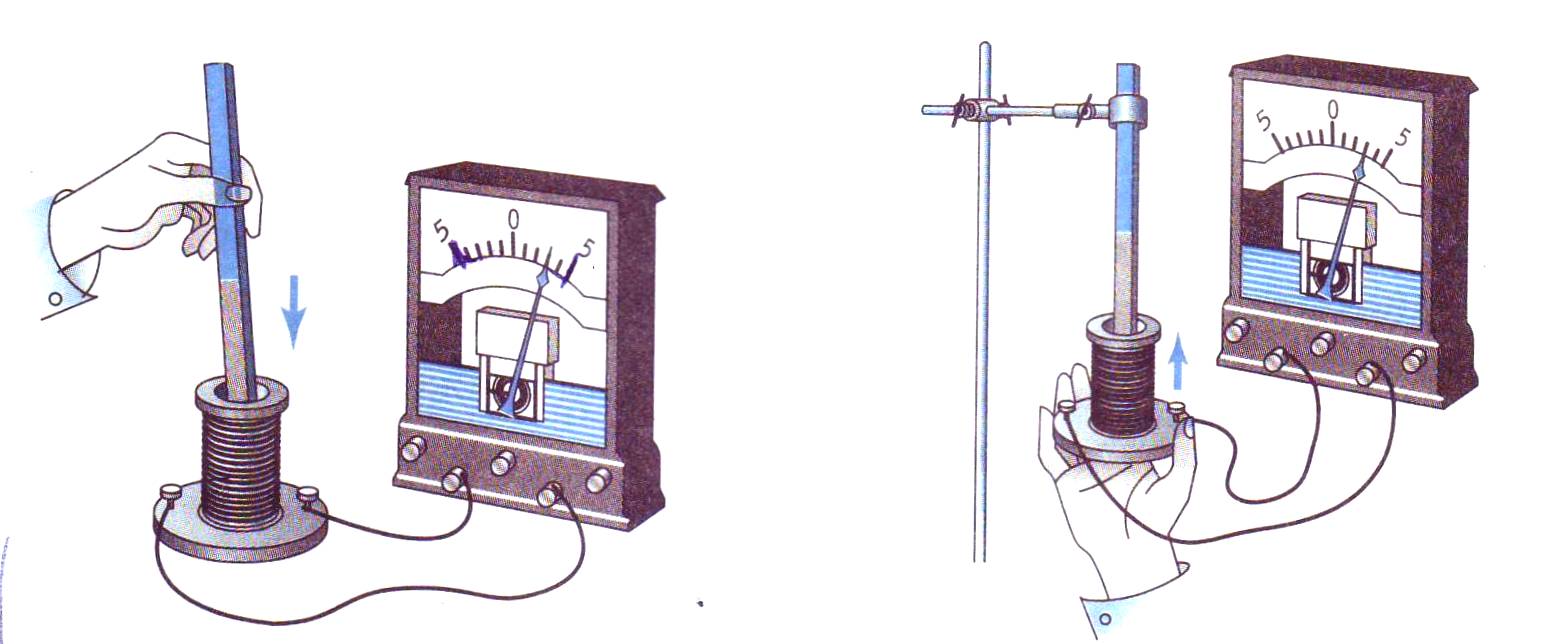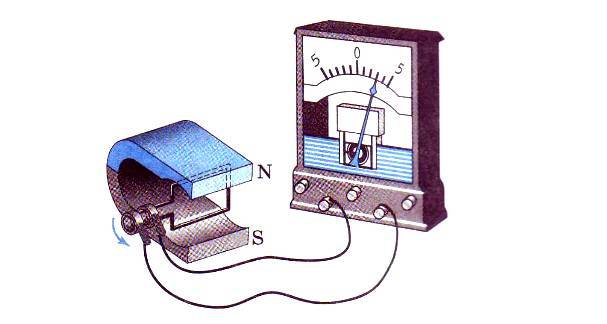Sterlitamak regional department of education
Physics lesson summary
in the 9th grade on the topic:
"The phenomenon of electromagnetic induction"
dedicated to the 220th anniversary of the birth of M. Faraday.
Prepared by the teacher of physics MBOU secondary school with. Novofedorovskoye Ishemgulova H.A.
2011-2012 academic year
Lesson is a game. Experts are investigating.
Lesson Form
: detective investigation of a physical phenomenon based on knowledge of previously studied topics.Target
and
lesson
: repeat and consolidate in a playful way the material of the studied topic "The phenomenon of electromagnetic induction", find additional material on this topic.
Form and develop analytical, research, computational, experimental
skills; the ability to find and make decisions; competitiveness; the ability to adapt to changing conditions set by the game, the ability to communicate, establish contacts, enjoy communicating with partners, learn to create a special emotional environmentDevices and materials
:
galvanometer, large and small coil, bar magnet, key, current source, wire circuit, large arcuate magnet, universal transformer, magnetic circuit, armature, tripod ring, iron rod. LESSON ORGANIZATION. 4 operational groups are being created. Some students are given topics for presentations in advance. A duty officer is appointed.During the lesson, the teacher evaluates group and individual performances and distributes tokens.
During the classes.
The duty officer at the operational headquarters makes a message:
Today at the headquarters we are investigating a physical phenomenon - the phenomenon of electromagnetic induction.
In notebooks, write down the number, topic.
Slide number 1.
The duty officer poses the following questions to the operational groups:
1. In
what is the phenomenon of electromagnetic induction.
Answer: With any change in the magnetic flux penetrating the circuit of a closed conductor, an electric current arises in this conductor, which exists throughout the entire process of changing the magnetic flux.Headquarters officer:
2.
Who is to blame for the appearance of this physical phenomenon?
Performance of the 1st student I group. Pupils make a short summary in their notebooks.
slide number 2
Michael Faraday was born in 1791 in Newvington, England. in a blacksmith's family.
He came from a poor family and was mostly self-taught. He received his education in elementary school.
Apprenticed at the age of fourteen to a bookbinder and bookseller, he took advantage of the opportunity that offered him much reading. When he was twenty years old, he began to attend the lectures of the famous English scientist Humphrey Davy and was delighted with them. He wrote Davy a letter and eventually got a job as his assistant. After traveling with Davy in France, Italy and Switzerland
he is already making the most important independent discoveries. Although he lacked a good mathematical foundation, he was unsurpassed experimental physicist. Faraday made his first important invention in the field of electricity in 1821. In 1824 Faraday is elected a Fellow of the Royal Society of London. This was his recognition as a scientist. A year later, Faraday became the director of the laboratory, and in 1827. holds a professorship at the Royal Institution. In 1831 discovered the phenomenon of electromagnetic induction. Gradually, Faraday abandoned many duties, trying to devote all his strength only to scientific research. Faraday studied electrolysis and established the laws of this phenomenon, investigated the dielectric properties of matter.In 1845 he discovered the rotation of the plane of polarization of light in a magnetic field and the phenomena of dia- and paramagnetism. Faraday was not only talented, he was handsome, and his scientific lectures were a great success. Nevertheless, he was a modest man, indifferent to fame, money, honors. He refused a noble knighthood and also refused to become President of the British Royal Society. He had a long and happy married life, but no children. He died in 1867 near London.The duty officer of the operational headquarters asks the question:
3.
What are the main motives for the appearance of the phenomenon
electromagnetic induction.
Performance of the 2nd student Group II. Near
In 1800, Volta invented the "Voltaic Pillar" - a source of direct current. In 1820, Oersted discovered the effect of current on a magnetic needle. A few months later, Ampere, having made a similar experiment, found that two parallel conductors carrying current in the same direction attract each other and repel each other if the currents are in opposite directions. He also investigated the properties of the solenoid and created a device called a galvanometer. Later, Ampere discovered the interaction of solenoids and noticed their similarity with magnets. In the same period, Arago discovered the phenomenon of the magnetization of iron by current and built the first electromagnet. This era of great discoveries is directly related to the rapid progress in industry during the initial development and establishment of capitalism after the victory over the feudal, stagnant mode of production. The need for more advanced technology, production, transport, and communications has sharply increased. The liveliest interest among scientists of this era meets every new discovery in the field of electricity. A galaxy of first-class scientists, professors of the best universities in Europe are engaged in research and solution of completely new problems and step by step penetrate into the unknown world of electrical phenomena and the laws of the structure of matter.The officer asks the following question:
4.
What is the main version of what happened?
Performance of the 3rd student III groups.
Slide #3
4.
Historical information about the discovery
M. Faraday phenomena of electromagnetic induction.
Faraday himself carried out many experiments and
was convinced that there must be another way to use magnetism to generate electricity, in 1922 he wrote in his diary "Turn Magnetism into Electricity",
continued to look for such a method. On August 29, 1831, Faraday succeeded in experimenting with the phenomenon of electromagnetic induction when the current changes. When the current passing through the wire coil was opened, a short-term current arose in the second coil placed in parallel, which could be seen from the slight deviations of the galvanometer needle. At the moment of closing the current in the first coil, a current again arose in the second, but in the opposite direction. The introduction of an iron core into the coils sharply intensified the observed phenomenon. ("Faraday ring" - two coils of insulated wire are wound.)The next question from the officer on duty is:5
.
Check, prove the existence of the phenomenon of electromagnetic induction.
There are instruments on the table: a galvanometer, a large and small coil, a bar magnet, a key, a current source, a wire circuit, a large arcuate magnet.Each group shows one of these experiments and explains the occurrence of an induction current. 
 What unites these experiences?What can be said about the magnetic flux, as the number of lines of magnetic induction penetrating a surface bounded by a contour?Slide #5
What unites these experiences?What can be said about the magnetic flux, as the number of lines of magnetic induction penetrating a surface bounded by a contour?Slide #5
Officer question:
6.
Using the information received, numerical data to make calculations, explain.
Problem solving: 4 students (strong) from 4 groups are given tasks on the cards.
Task number 1.
Coil area 5 cm
2
put
In a magnetic field. Determine the EMF of induction in the coil, if in 5 ms the magnetic induction is equal to
gradually decreases from 0.8 to 0.4 T.
The rest are offered the following tasks: (the teacher shows these experiments)
Connect the winding of any electromagnet to a galvanometer. Why does the galvanometer indicate the occurrence of current in the circuit when closing and opening the poles of an electromagnet with an armature?
(Answer: the core of an electromagnet has residual magnetism. When the magnetic circuit (core) is opened, a change in the magnetic field around the coil is observed, which leads to the appearance of EMF and current in the turns of the coil). Mount the coil from the 220 V universal transformer on the tripod ring and connect it to the galvanometer. Place a strong arcuate magnet above it, and insert an iron rod 25-30 cm long and 6-10 mm in diameter inside it. Move the rod from one pole of the magnet to the other. Why does this generate current? Where a similar phenomenon is used in practice.
(Answer: when the rod moves from pole to pole, it remagnetizes. As a result, the magnetic field inside the rod and around it changes. This change in the magnetic field excites an induction EMF in the coil, and the latter in the circuit creates a current. In this experiment, the transformation of the mechanical vibrations of the rod into fluctuations in electric current.A similar phenomenon is observed when playing sound from gramophone records.)3) Connect two universal galvanometers with a conductor. If one of them causes the movement of the arrow by turning the galvanometer, then the other one observes the deviation of the arrow. This indicates the occurrence of an electric current in the circuit. How can this be explained?(Answer: together with the galvanometer needle, the coil also moves in a magnetic field. An EMF arises in the coil in a closed circuit of two galvanometers. An electric current arises. When current flows through the coil of the second galvanometer, it rotates in a magnetic field along with the arrow.)4) Connect the conductor to the terminals of the galvanometer of the demonstration ammeter. Take a strong arcuate magnet and bring it to the place of the galvanometer where its winding is located. Rotate the magnet around the longitudinal axis. Why does the galvanometer needle begin to oscillate?(Answer: the occurrence of an induction current in the galvanometer coil is due to a change in the magnetic field.)Slide number 6.
Question from the officer on duty:
7. What are the consequences of the phenomenon of electromagnetic induction discovered by Faraday? Each group draws conclusions.
I
group: Based on the phenomenon eelectromagnetic induction, powerful generators of electrical energy were created. II group
: Today, 95% of electricity is produced, transmitted and consumed using induction generators. III group
:
phenomenon of electromagnetic induction
is essential to our theoretical understandingThe general conclusion on the investigation is made by the duty officer at the headquarters:
Investigating the physical phenomenon, we came to the following conclusions:The phenomenon of electromagnetic induction brings only benefits, is of great practical importance, therefore we justify it and continue studying.
Task for groups: Groups exchange task cards and solve them.
Find interesting tasks, material on the practical application of the phenomenon of electromagnetic induction
. Issue a wall newspaper dedicated to the outstanding scientist M. Faraday 220 years from the date of birthThe teacher announces grades to students, explaining why they received such grades.Literature and Internet resources:1.A.V.Peryshkin, E.M. Gutnik. Physics. Grade 92. Reader in physics. Edited by B.I. Spassky.3.
M.I. Bludov.
Conversations on physics.4. L.A. Gorev. Entertaining experiments in physics.5. S.V. Kulnevich, T.P. Lakotsinina. Not a typical lesson. Practical guide.6.
A.I. Semke. Physics lessons in the 9th grade.http://www.dmitrysmor.ru/sto_velikih/show/23

 What unites these experiences?What can be said about the magnetic flux, as the number of lines of magnetic induction penetrating a surface bounded by a contour?Slide #5
What unites these experiences?What can be said about the magnetic flux, as the number of lines of magnetic induction penetrating a surface bounded by a contour?Slide #5
